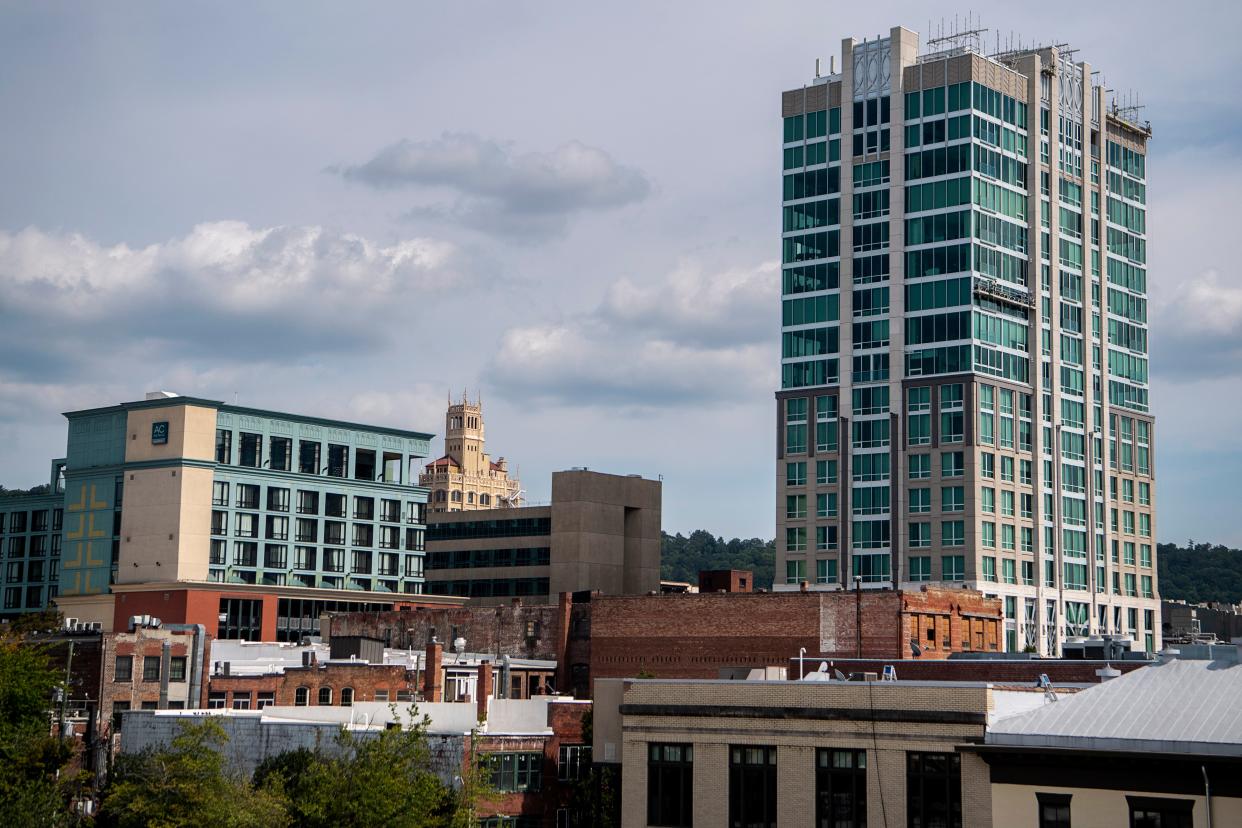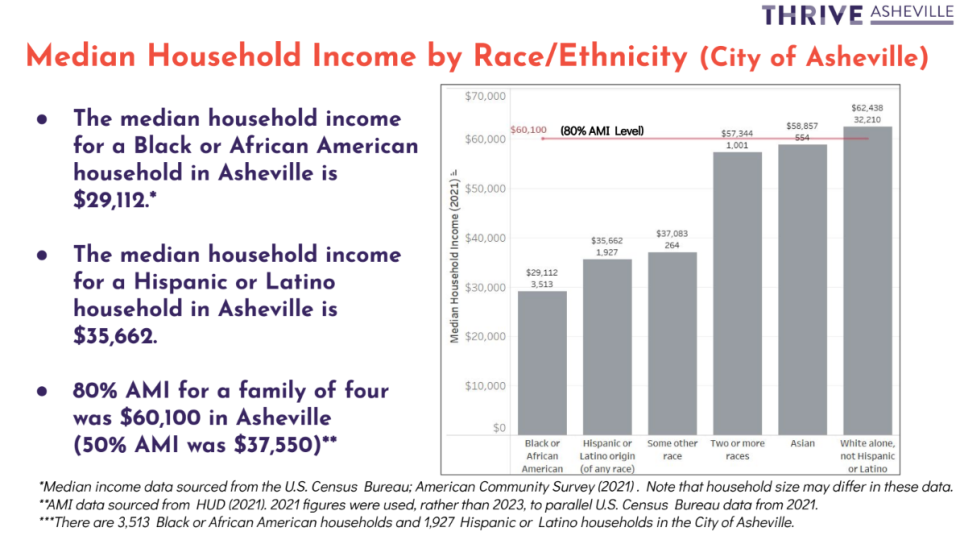Study: How much affordable housing has Asheville City Council approved in 10 years?

ASHEVILLE - Local nonprofit Thrive Asheville is studying the city's investments in affordable housing through a $135,000 contract with the city, funded in 2022 with COVID relief dollars. A presentation of findings concluded that city housing investments targeting incomes at the higher end of affordability, like 60-80% of the area median income, likely exacerbate racial and gender gaps.
Garrett Raczek, a consultant with Thrive Asheville, presented results of its "opening doors" study to City Council Nov. 9 in a virtual agenda briefing. While the nonprofit's work mapping the city's housing ecosystem is still ongoing, as well as enhancements to the Landlord-Tenant Partnership program, the update encompassed data from its study into the city's past investments in affordable housing.
Raczek's presentation considered median household income, and the "drastic gaps" between white and Black households, as well as the racial and economic demographics of the city's voucher holders.
While someone earning 80% AMI, which is $47,600 for a one-person household in 2023, is designated "affordable," it's often critiqued as still out of reach for many families. Thrive's study found this to be the case. When looking at median incomes for four-person households among different racial demographics, only white households surpassed 80% AMI.
Raczek said you could lower that bar to 50% AMI, and it would still be above the median income for Black and Hispanic households.

“It calls into question who is able to access housing that we sometime call affordable,” he said.
Among the study's key findings, was that persistent racial and gender income gaps impact which community members are able to access "affordable" housing, and that many "underserved" community members fall below the 60-80% AMI threshold.
“What we really need to do to target those most who are most harmed by historical and current policies and systems is focus programs, policies and subsidies on those at the 30-50% AMI level," Raczek said, both in the private rental market and public housing.
City Council member Antanette Mosley said it reminded her of the city's approval of a new Ingles on Patton Avenue more than a year before, when members of the Emma community, which represents a large Hispanic population in the area, supported the project, but opposed potential dense, mixed-use development for the site, fearing displacement and gentrification.
During that conversation, Mosley said people were asking how affordable housing can lead to gentrification.
This data, she said, points to "how that can actually be so."
Asheville median household income by race and ethnicity
Median income data was sourced from the 2021 U.S. Census Bureau American Community Survey and considers households of four. In this case, 80% AMI is $60,100.
White alone, not Hispanic or Latino: $62,438
Asian: $58,857
Two or more races: $57,344
Some other race: $37, 083
Hispanic or Latino origin (of any race): $35,662
Black or African American: $29,112
How much affordable housing stock has Asheville City Council approved in last 10 years?
In the past decade, from fiscal year 2013-14 to 2022-23, City Council approved 5,181 housing units in projects that included affordable housing. Of these, 1,451 are slated to be affordable at 80% AMI or lower.
The city's Affordable Housing Officer Sasha Vrtunski said they did not parse out the different levels of affordability within that dataset, but it includes tax credit projects, which often serve a mix of incomes, averaging at or below 60% AMI.
According to Thrive's presentation, of those projects with affordable units, approximately 28% were "affordable," while the rest were market rate units. When looking at the nearly 1,500 affordable units approved, approximately half were funded by the city's Housing Trust Fund or Land Use Incentive Grant program, tools used to support affordable housing developments.
In a five year window, from 2018 to 2022, 437 affordable units were permitted. Of these:
80% AMI: 85 units
60% AMI: 238 units
50% AMI: 42 units
30% AMI: 72 units
City response to study
City Manager Debra Campbell said the study's findings would help shape how the city looks at affordable housing policies, as well as the tools it uses to incentivize and support development of affordable units.
Council member Sage said she was grateful American Rescue Plan Act funds could be directed toward this research.
"I also think it's really important that we keep monitoring this going forward so we better understand," Turner said. "We haven't had this data before so it's extremely helpful to how we're doing with our programs."
She asked if it would be possible to examine similar data for other size households, like one and two-person households.
Vrtunski said that data would come through the city's housing needs assessment as part of its ongoing Affordable Housing Plan update, "we've got folks working on that."
More: Buncombe Board of Adjustment moves controversial 74-unit development hearing for 5th time
Sarah Honosky is the city government reporter for the Asheville Citizen Times, part of the USA TODAY Network. News Tips? Email shonosky@citizentimes.com or message on Twitter at @slhonosky. Please support local, daily journalism with a subscription to the Citizen Times.
This article originally appeared on Asheville Citizen Times: Asheville needs affordable housing for lower income households: report

